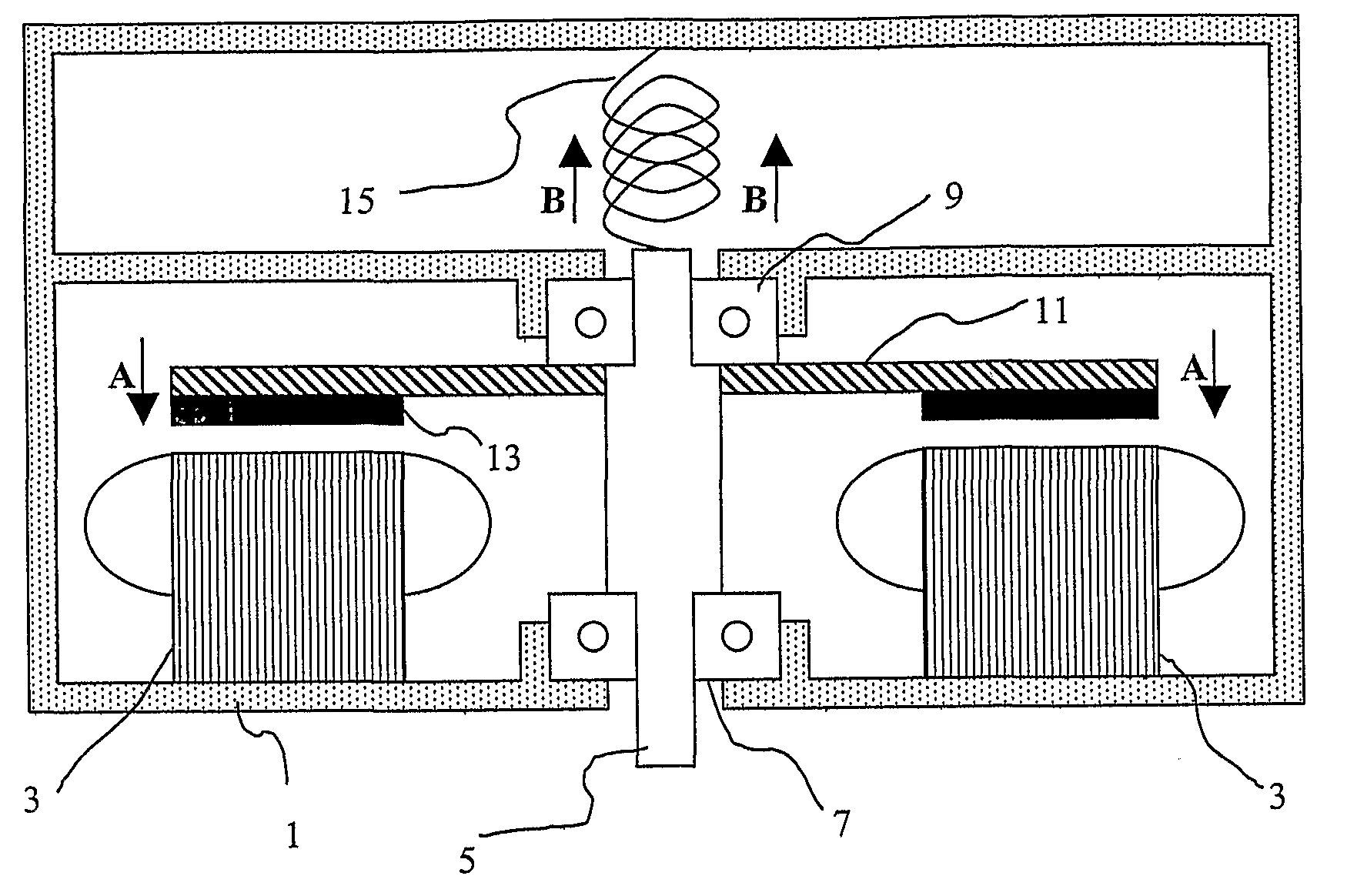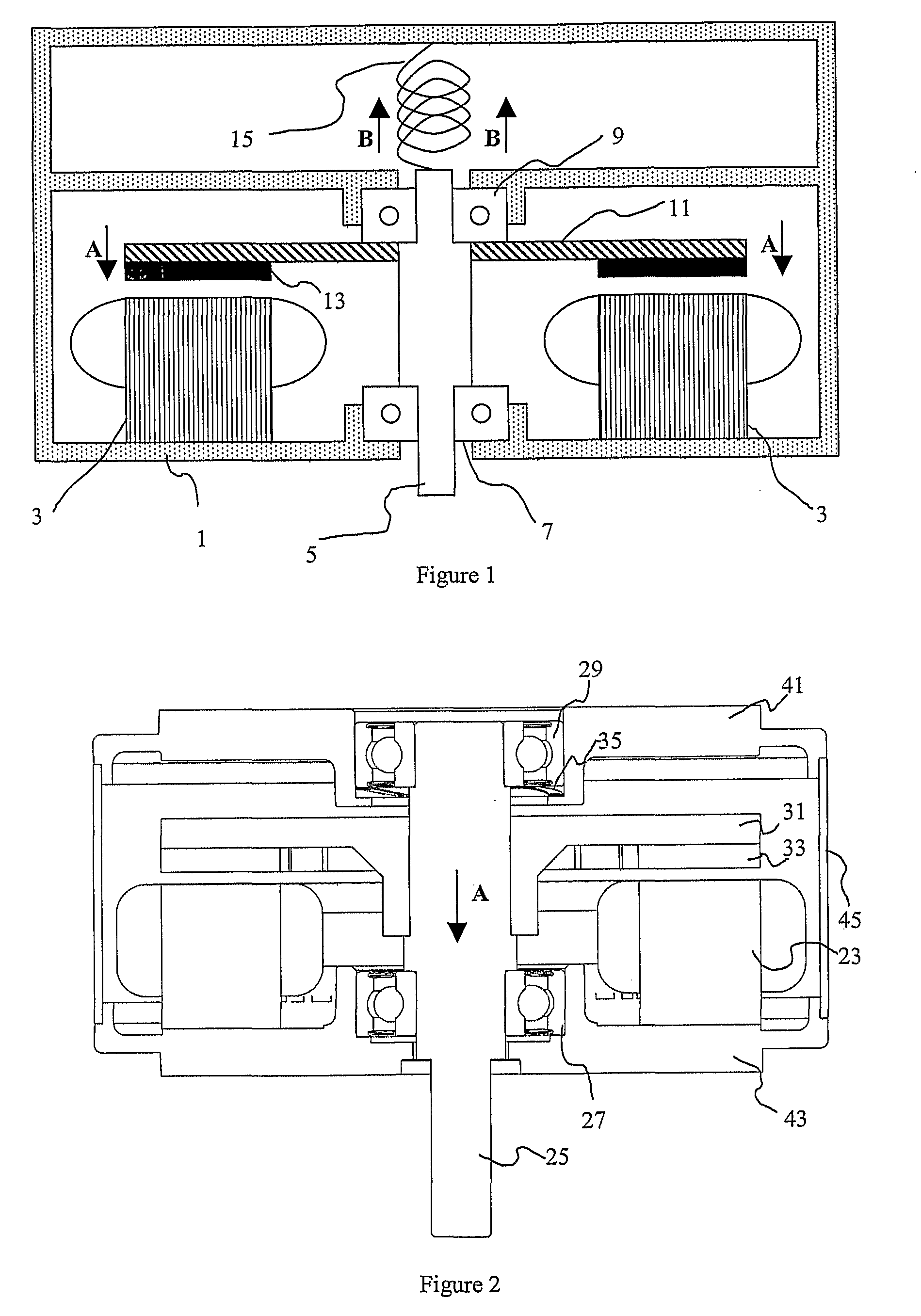Axial flux electrical machine
- Summary
- Abstract
- Description
- Claims
- Application Information
AI Technical Summary
Benefits of technology
Problems solved by technology
Method used
Image
Examples
Embodiment Construction
[0025]Referring initially to FIG. 1 of the drawings, there is shown a schematic representation of an axial flux direct current (DC) motor. The motor includes a housing 1, a stator 3 located within the housing 1, a rotatable shaft 5 carried by the housing 1 by means of a main bearing 7 and a secondary bearing 9. The motor also includes a rotor 11 fixed to the shaft 5 and has permanent magnets 13 attached to the rotor. Magnetic attractive forces between the magnets 13 on the rotor 11 and the stator 3 produce an axial thrust in the direction “A” on the main bearing 7. The motor further includes a biasing means, represented as a spring 15, which is arranged to urge the shaft 5 in the direction “B” so as to reduce the net load on the main bearing 7.
[0026]It will be appreciated from the somewhat idealised representation in FIG. 1 that the invention is based on the principle of applying a force to the shaft 5 in a direction which is opposite to the direction of the magnetic force. This may...
PUM
 Login to View More
Login to View More Abstract
Description
Claims
Application Information
 Login to View More
Login to View More - R&D
- Intellectual Property
- Life Sciences
- Materials
- Tech Scout
- Unparalleled Data Quality
- Higher Quality Content
- 60% Fewer Hallucinations
Browse by: Latest US Patents, China's latest patents, Technical Efficacy Thesaurus, Application Domain, Technology Topic, Popular Technical Reports.
© 2025 PatSnap. All rights reserved.Legal|Privacy policy|Modern Slavery Act Transparency Statement|Sitemap|About US| Contact US: help@patsnap.com



